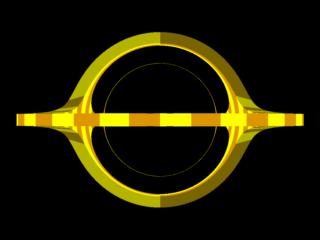Neutron star with radius 4. The mass is increased from M = 0 to M = 1.78. A mass of 1.78 corresponds to a ratio of radius to Schwarzschild radius of 9/8. Theory predicts that a smaller ratio is not possible for a stable star.
MPEG4 320×240 (299 kB), MPEG4 640×480 (928 kB)Relativity visualized

